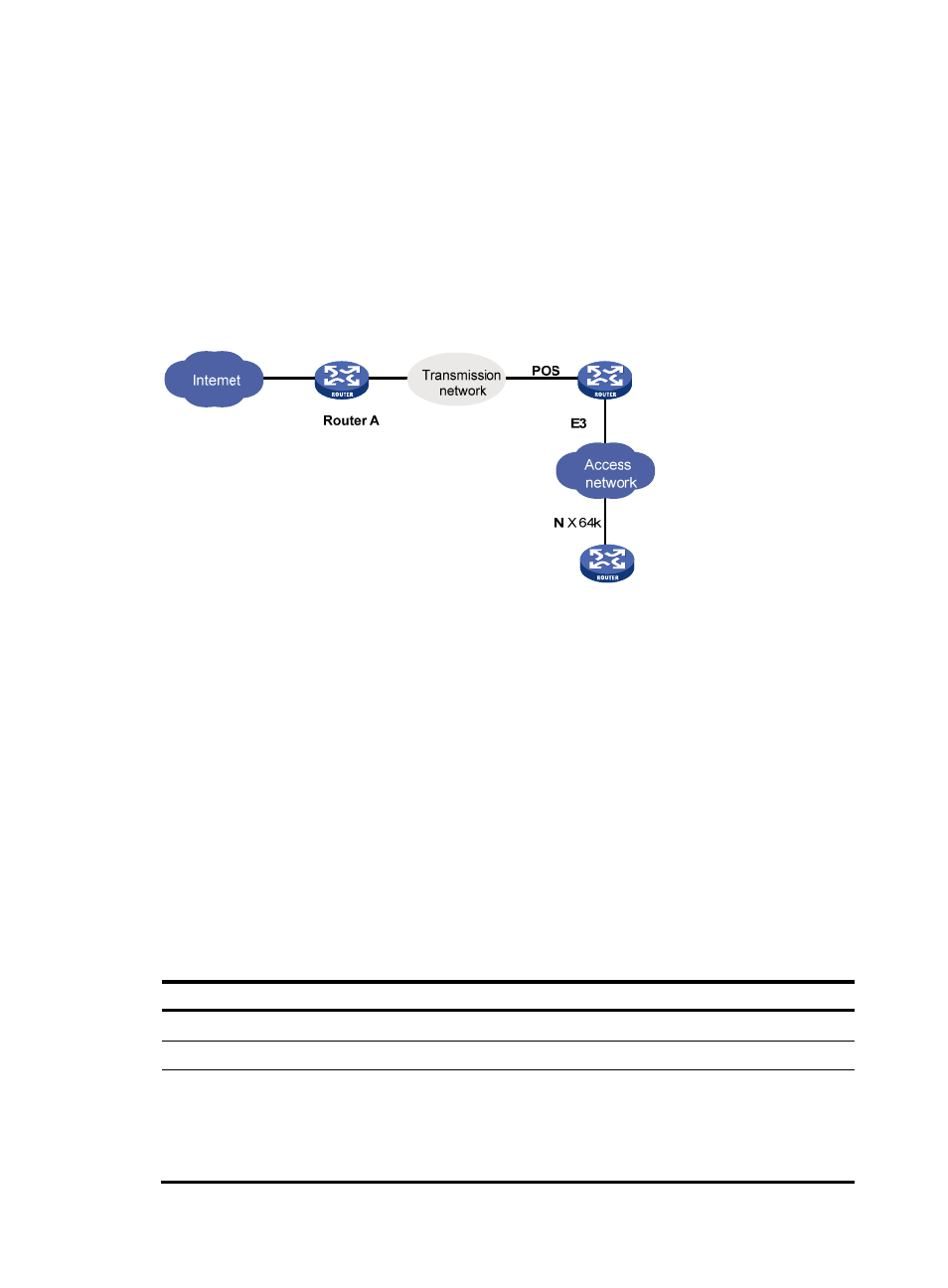E-cpos interface application scenario, Configuring an e-cpos interface – H3C Technologies H3C SR8800 User Manual
Page 54

47
•
In concatenated mode, STM-N frames are processed without being demultiplexed.
E-CPOS interface application scenario
E-CPOS enhances the capability of network devices in low-speed access redistribution. STM-1 E-CPOS is
especially suitable for aggregating E3/T3 channels. As shown in
, some government agencies
and enterprises use low-end and mid-range routers to access the transmission network through E3/T3
leased lines. Users who require bandwidth between E3 and T3, for a data center for example, lease
multiple E3/T3 lines. The bandwidth of all these users is aggregated to one or more CPOS interfaces
through the transmission network, and then connected to a high-end router where the low-end routers are
uniquely identified by timeslots.
Figure 17 Network diagram
In actual applications, the connection between these low-end routers and the E-POS interfaces may span
more than one transmission network and as such, may require relay. This is similar to the scenario where
low-end network devices are connected to Router A through one or multiple E3/T3 leased lines.
Configuring an E-CPOS interface
Before transmitting data over SONET/SDH optical interfaces and using low-speed ports for accessing,
configure the E-CPOS interface first.
Complete the following tasks to configure an E-CPOS interface:
•
Configuring an E-CPOS interface
•
Configuring the operating mode of an E-CPOS interface/channel
Configuring an E-CPOS interface
To configure an E-CPOS interface:
Step Command
Remarks
1.
Enter system view.
system-view
N/A
2.
Enter E-CPOS interface view.
controller e-cpos interface-number N/A
3.
Set the interface description.
description text
Optional.
By default, the description of an
E-CPOS interface is interface name
Interface, for example,
E-Cpos7/1/6 Interface.
